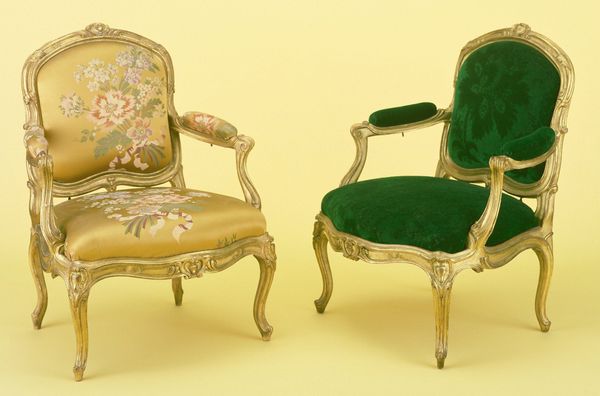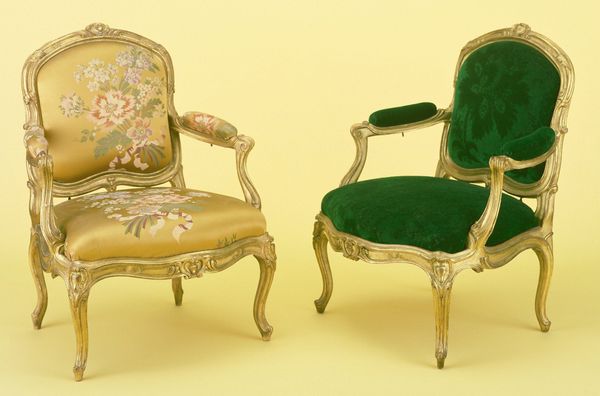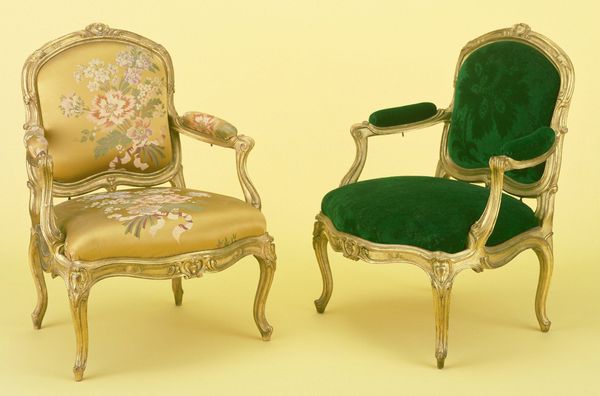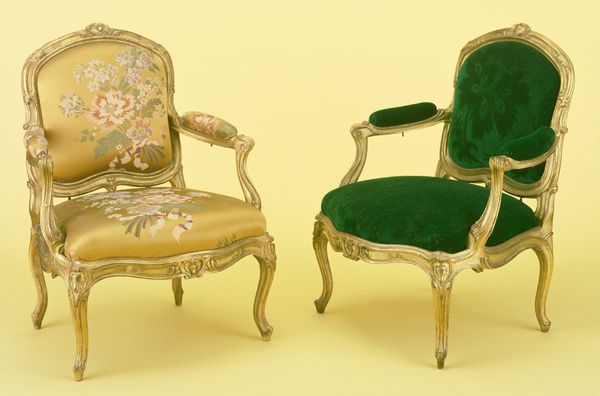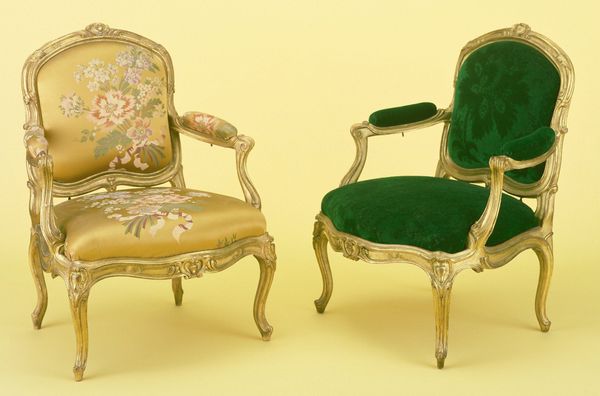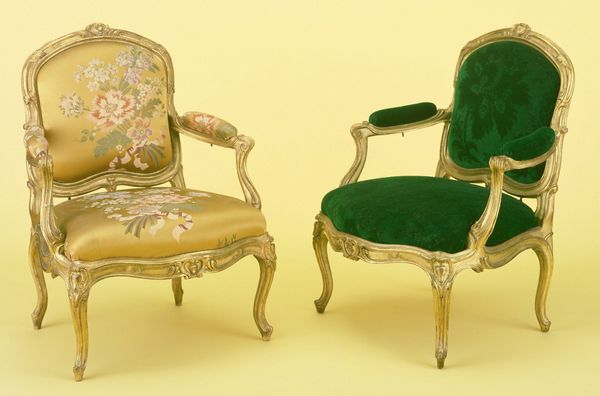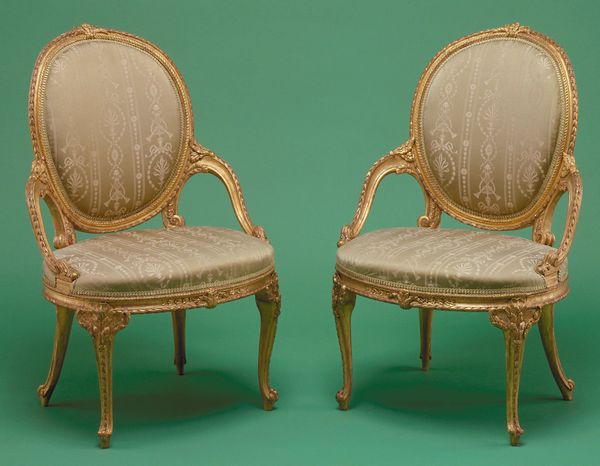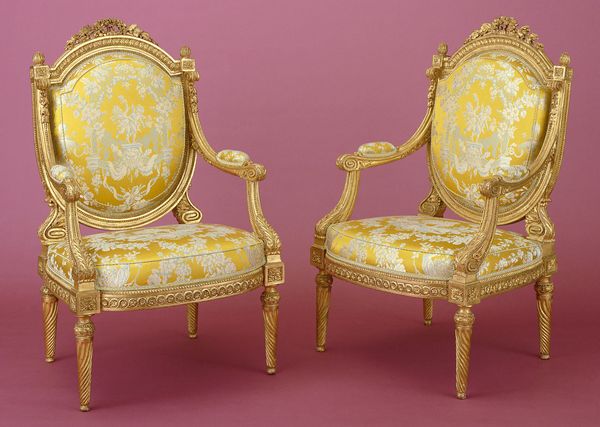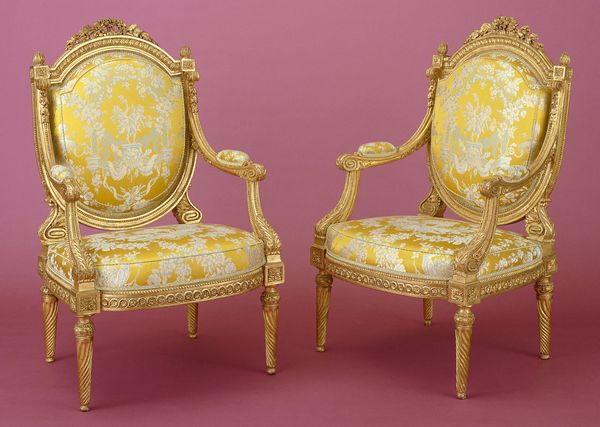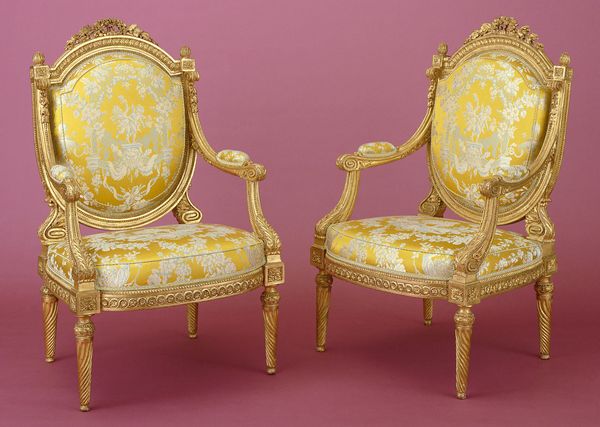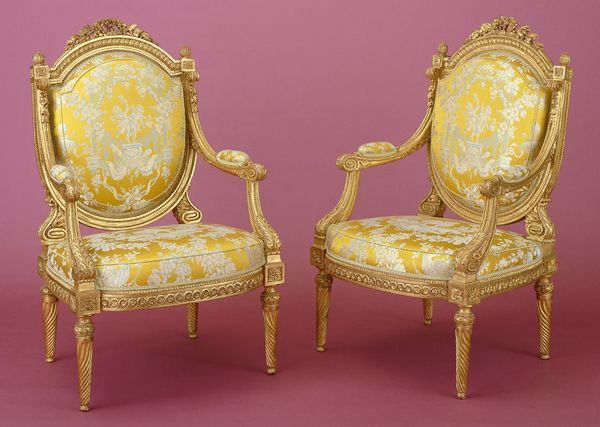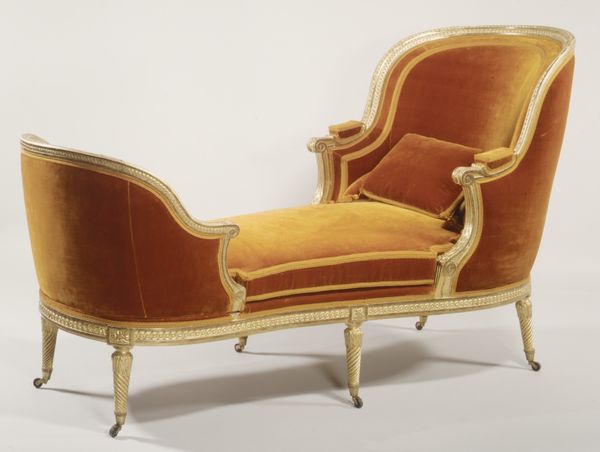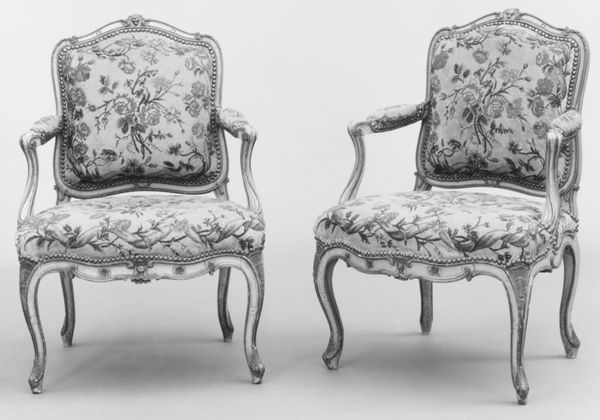
#
furniture
#
decorative
#
france
#
decorative-art
#
rococo
Dimensions: 38 1/2 x 27 x 24 in. (97.79 x 68.58 x 60.96 cm)
Copyright: Public Domain
Curator: Looking at these two chairs together is a bit like peeking into different moods. I am drawn to the ornate details in the Rococo style that’s characteristic for the mid-18th century France. They're examples of work by Jean-Baptiste Lebas, likely after he achieved master status in 1756. Editor: Ah, these chairs are wonderful! The green one reminds me of shadowy glades deep in the forest. Its regal bearing suggests hushed secrets and a silent witness to generations. Then, the flowered one evokes memories of lush summer gardens. Imagine the scent of blooming jasmine in its silken threads. It would not look out of place in an intimate chamber during Marie Antoinette's era. Curator: Right! Both embody that lightness, almost ephemeral feel associated with the Rococo. But while they speak the same design language, there are, of course, significant material and color differences. Each piece brings a unique presence to the set. Did Lebas consider how they related to each other? Or do they appear similar by chance? Editor: Possibly a commissioned project intended to adorn spaces designed to stimulate diverse sensory experiences. These seats probably belonged to aristocracy looking to craft ambiences of intrigue. One chair whispers conspiratorial delights. While the other whispers tales of springtime love, of gentle breezes through open windows. Together, it creates quite a juxtaposition. It's an invitation to dream beyond tangible limits. Curator: And also, perhaps a reflection of the changing tastes. The fashion forward people that moved between interior spaces in France. Editor: Or maybe they were created as an exquisite gift: A symbol for the spectrum of sensations life bestows. They call you towards comfort while kindling flames of thought. I am left musing: Is solace in decor essential to find moments of escape? Curator: Absolutely, our engagement with functional art invites questions regarding accessibility of cultural status and wealth in society. Considering those historical perspectives also grants me the opportunity to imagine myself nestled within the curves of those seats.
Comments
No comments
Be the first to comment and join the conversation on the ultimate creative platform.
